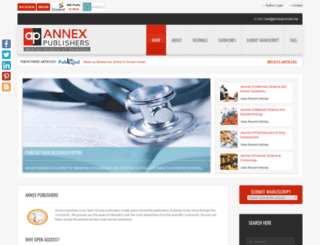Annex Publishers | Open Access Journals | Open Access Articles
Page Load Speed
1.7 sec in total
First Response
205 ms
Resources Loaded
1.2 sec
Page Rendered
314 ms

About Website
Click here to check amazing Annex Journals content for India. Otherwise, check out these important facts you probably never knew about annexjournals.org
Annex Publishers is an interactive open access journal publisher for the communication of all scientific and medical research. Open Access Publisher in United States.
Visit annexjournals.orgKey Findings
We analyzed Annexjournals.org page load time and found that the first response time was 205 ms and then it took 1.5 sec to load all DOM resources and completely render a web page. This is quite a good result, as only 30% of websites can load faster.